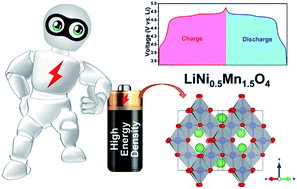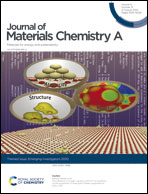Developing high-voltage spinel LiNi0.5Mn1.5O4 cathodes for high-energy-density lithium-ion batteries: current achievements and future prospects
Abstract
High-voltage spinel LiNi0.5Mn1.5O4 (LNMO) is a promising cathode for the next-generation high-performance lithium-ion batteries (LIBs) due to its high energy density (650 W h kg−1), high operating voltage (∼4.7 V vs. Li), low fabrication cost, and low environmental impact. However, the short cycle life of LNMO caused by rapid capacity decay during cycling limits its wide application and commercialization. Intense research effort to improve the electrochemical performance of LNMO has been moderately successful. Accordingly, it is absolutely necessary to revisit and summarize the up-to-date findings and deeper understanding of how to modify LNMO. In this review, the crystallographic structure and electrochemical properties of LNMO spinel, as well as its existing issues and corresponding solutions, are discussed in detail. In addition, the current accomplishments relating to LNMO application in full-cell configurations are also discussed. Finally, some insight into the future prospects for LNMO cathode developments is provided.

- This article is part of the themed collections: Journal of Materials Chemistry A Recent Review Articles and Journal of Materials Chemistry A Emerging Investigators


 Please wait while we load your content...
Please wait while we load your content...